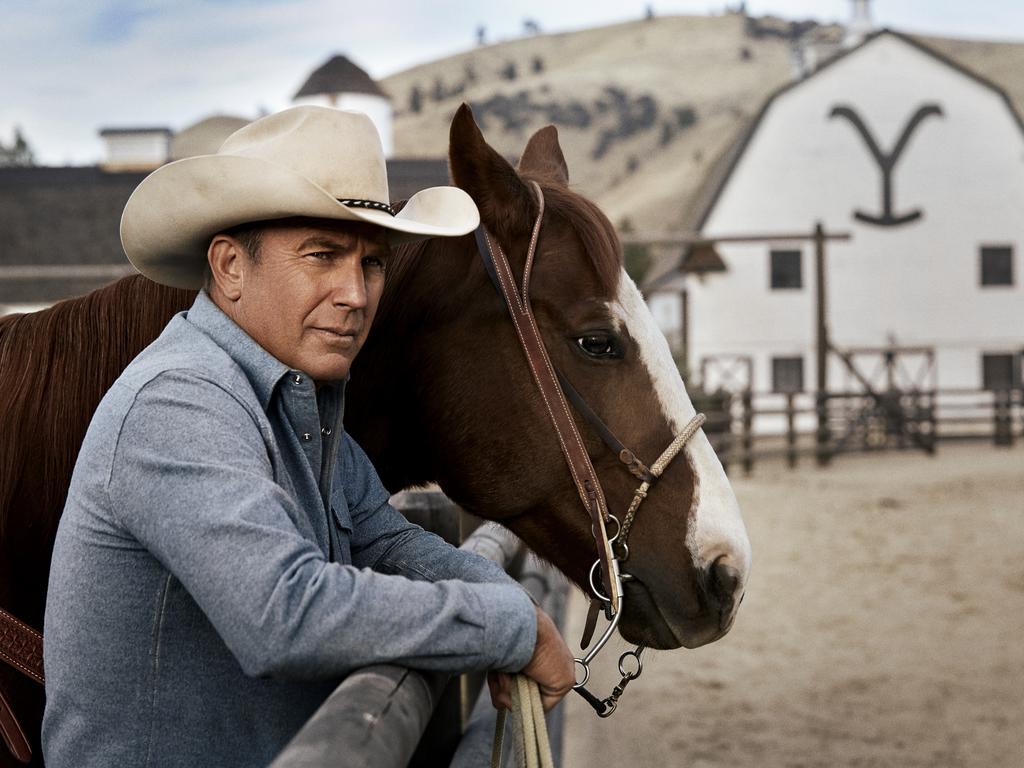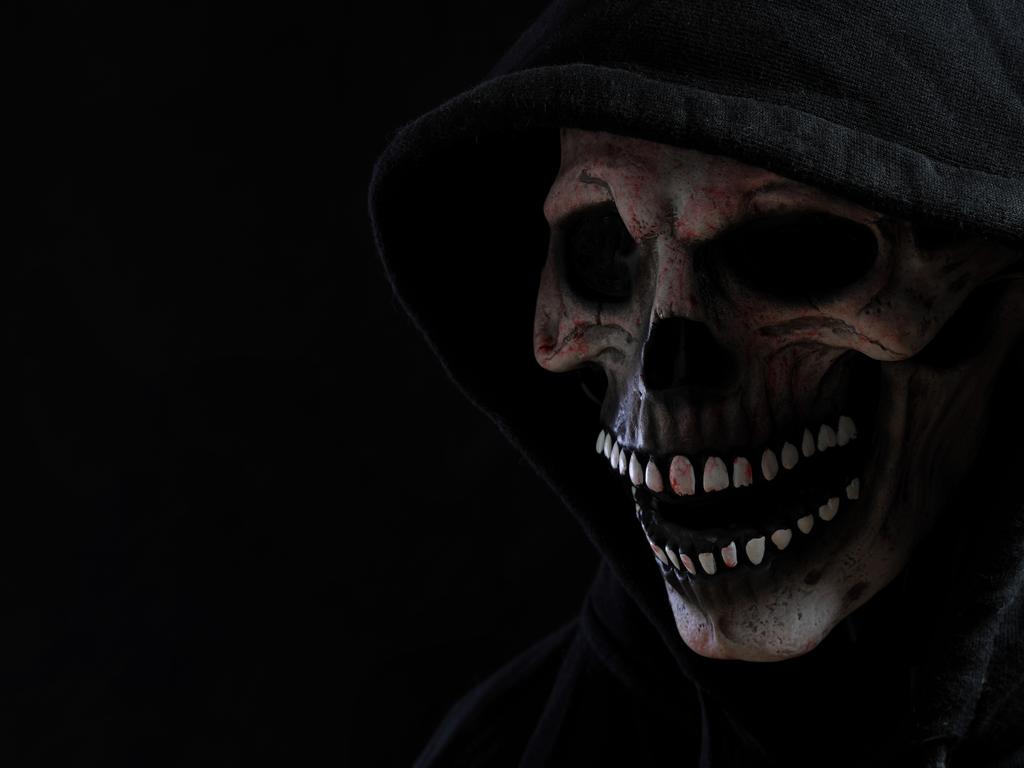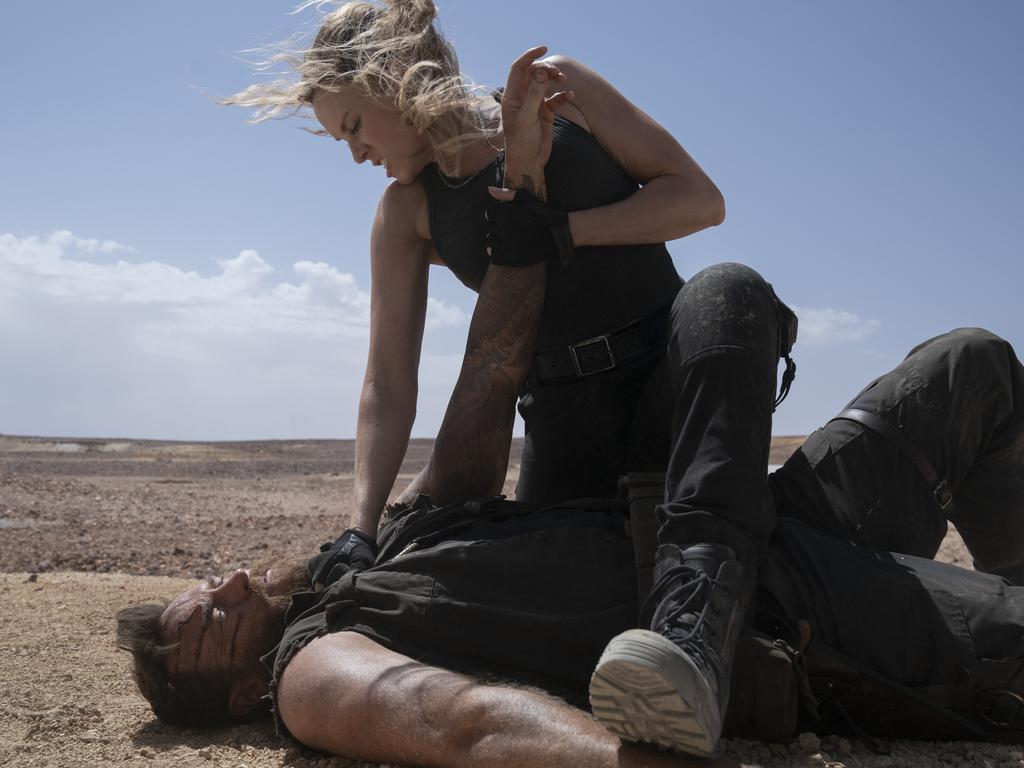A mystery horror series from one of the Yellowstone makers keeps viewers guessing.
Despite my long-held misgivings about the horror genre, I was sucked in to this series across the first two short episodes.

I must admit that horror is not a genre I’ve followed closely. I don’t find even the better ones all that pleasurable, the way they traffic, often in such schlocky ways, in disquiet, distress and displeasure.
As a resident critic on Foxtel’s Screen, I often had to watch horror movies and I found the experience confusing, perplexing – and, finally, irritating. As I say, it’s not a genre I’m particularly fond of and just didn’t have the patience to unravel a totally confusing plot and hang in with a bunch of characters about whom I cared not a jot.
Most seem to be, to quote the acerbic critic Stephen Hunter, rehashes “of the customary whackings and dicings appended to a plot of stupefying banality held together by a skein of logic that might be regarded as sub-Neanderthalian”.
I get the point that the current cultural moment is concerned with death, monsters and what horror fans call “jump scares” galore – you know, when the monster pops out of the wardrobe. And that the genre presents us with a safe place that we, as a culture, can deal with things that upset and frighten us.
There may be relief in seeking out situations that give us a blast of well-defined fear with a clear source and a crucial element of control, as some psychologists suggest. As Stephen King says, “In times when people are scared and frightened, they turn to horror material like it’s home.”
So that’s one of the reasons I hooked into the oddly titled Teacup, which has just landed. But mainly I watched Teacup because it was created by Ian McCulloch, a consulting producer on the hit series Yellowstone and a writer not known for crude, exploitative TV featuring scenes of dismemberment and decapitation.
In his executive producer James Wan and Wan’s company Atomic Monster, he has teamed up with someone who knows just how to market the genre’s grisliness, sometimes strangely comic violence and the extremes of gothic mystification.
Wan is the director of acclaimed horror movies such as Saw, Insidious, The Conjuring and Malignant, and in TV his company has produced series across genres including MacGyver, Swamp Thing, I Know What You Did Last Summer and Aquaman: King of Atlantis. Teacup’s director is the well-regarded E. L. Katz, something of a horror specialist and best known for the cult classic Cheap Thrills.
Teacup is “inspired”, very loosely, by Robert R. McCammon’s 1988 science fiction novel Stinger, described by one critic as “the ultimate horror novel”. At the time McCammon, also an executive producer of Teacup, was considered as significant a generic practitioner as Stephen King and Peter Straub, though he later moved on when he believed horror was “becoming too gory and sadistic for my taste”.
Stinger takes place during 24 hours in the dying Texas town of Inferno, a bleak place fraught with troubling racial tension, gang violence and a failing economy. The local high school is on the verge of being shut down, with two rival gangs – the Rattlers and the Renegades – battling for control as the chaos spreads.

Then two alien forms arrive, their spaceships soaring out of the clouds, the second craft containing the character known as Stinger on a mission he plans to complete, regardless of the cost. He’s an interstellar bounty hunter bearing an arsenal of deadly weapons, but the township’s people refuse to succumb to Stinger’s reign of terror.
It’s all very 80s, an era that witnessed a surge in horror movie production, and as the writer Karina Wilson, an authority in the field, suggests, the horror films of that period “delivered the full colour close-up, look-no-strings-attached special effect in a way that previous practitioners of the art could only dream about”.
As she says, the monsters were finally out of the closet. Consequently, there was a boom in mass-market, horror novels sought by publishers. As the taste for horror spread, readers had a wide variety of authors from which to choose. The decade saw an increased concern about violent crime, the horror genre (it’s argued) allowing readers and viewers to handle their anxieties in a controlled environment.
Wan saw something in the novel, what he calls “a spark”, felt, he says, by his team at Atomic Monster. “The story had all the ingredients for a captivating series and Ian McCulloch had a vision to bring it to life in a fresh way that was both startling and darkly atmospheric but filled with a rich sense of humanity – often lacking in edgy narratives.”
But McCulloch, while never denigrating his source material and its period flourishes, saw something quite different. “I think that if I had read the book as a teenager when it came out, I might have felt a little more beholden to it. This is a very different kind of adaptation in that it’s really the spirit of the thing and the ideas, and not much else.” First approached, the “no-holds-barred, gargantuan spectacle of a novel along the lines of The Stand, Independence Day and Mars Attacks” held little appeal. “I’m not a spectacle writer” he said in a statement about the project. “I’m a less-is-more writer. I gravitate more toward what are known as keyhole epics. Large stories told through small lenses.”
But the novel stayed with him, “its razor-sharp premise”, the way it unfolded over a single day, and the relatable single family at its centre, and an idea went off for McCulloch.
“What if I adapted Stinger in a way that honours the book and stays true to the kinds of stories I like to tell? Keep the conceit. Keep Stinger’s most effective elements. Take away the large ensemble. Take away the giant set pieces. Even take away the book’s crowded town setting.”
And gripping it is, too.
What he gives us is “a puzzle-box mystery, an edge-of-your-seat thriller, a can’t-but-must-look horror story, a family drama, a science fiction epic – of the keyhole variety, of course.”
It begins with terror in a forest in secluded Georgia, the dusty Texas setting of the novel discarded, and McCulloch takes us into an intimate encounter with a family drama, which turns quickly into an enticing mystery. By the end of the second episode, we are right into thriller territory.

And it’s startling, with its share of unexpected twists, but McCulloch ensures it all happens in a believable context – never, at least so far, pushing us into any suspension of disbelief.
First up, a bloodied injured woman alone in the forest is desperately trying to escape from plastic ties that bind her wrists. She’s crying incoherently as a large dog watches from a distance. The camera tilts up and an aerial shot reveals farmhouses in the distance.
It’s the home of the Chenoweths, the mother, Maggie (Yvonne Strahovski), a vet, her clinic nearby, playing games with her son Arlo (Caleb Dolden), trapping a wasp in a teacup – maybe a clue to the title – before releasing it outside.
We meet her husband, James (Scott Speedman), and very bright daughter Meryl (Emily Bierre), and James’s ill-at-ease mother (Kathy Baker). There is tension running through the adult relationships – it’s possible, we learn later, that James has had an affair with a neighbour.
Then, abruptly, things start to go awry. The family’s stabled horses become disturbed, and neighbours arrive abruptly with another damaged horse, a huge splinter near its eye. Then Arlo, fond of disappearing and known for his “jack-in-the-box tricks”, vanishes into the surrounding forest, maybe looking for a lost goat.
When he reappears, he’s traumatised, speaking a weird language, warning his mother that something is coming, and it kills anything that gets in its way.
In the chaos that ensues the power is extinguished, and the family and their neighbours are suddenly corralled behind a blue line drawn by a mysterious character in a gas mask who holds up a sign saying “Don’t trust anyone”, while holding them at gunpoint.
The acting is splendid, the most extraordinary events played in a committed naturalistic style, each actor under Katz’s sympathetic direction focused on creating a believable reality as their world starts to collapse.
And what’s so clever about what unfolds in that dense forest is that we are just as clueless as the characters; it’s one of those mysteries where, just as the characters begin to figure out what is happening, so do we. As McCammon himself said in an interview later in his career: “Real horror is quiet and moves slowly, like a python very slowly encircling you. Very slowly, very quietly … and then you are caught, and you are squeezed.”
Despite my long-held misgivings about the genre, I was sucked in across the first two short episodes. Why are the eight episodes so brief, you ask?
“I came up as a playwright long, long ago and the idea not only was always shorter, more economical episodes but to leave them wanting more,” McCulloch says.
Teacup is streaming on Foxtel and Binge.





To join the conversation, please log in. Don't have an account? Register
Join the conversation, you are commenting as Logout